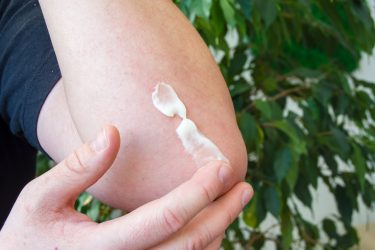Five of the most recent pharma collaborations in 2020
Posted: 30 January 2020 | Hannah Balfour (European Pharmaceutical Review) | No comments yet
As companies continue to collaborate and share their expertise to develop therapeutics targeting a wide range of diseases, European Pharmaceutical Review explores the aims of the most recent partnerships.


Collaborations between pharmaceutical companies have varying focuses ranging from drug discovery and development to clinical trials and imaging. European Pharmaceutical Review’s Hannah Balfour explores five of the latest collaborations and their primary goals. The collaborations are listed from newest to oldest.
Cardiovascular disease collaboration
…the deal includes the creation of an industry and academic consortium to… improve the efficiency and scale at which the UK can manufacture oligonucleotide medicines”
Novartis revealed it will provide its drug inclisiran, not currently approved, for a large-scale UK National Health Service (NHS) clinical trial in atherosclerotic cardiovascular disease (CVD) patients.1
Inclisiran is a cholesterol-lowering treatment that is currently in a Phase III trial, assessing whether a bi-annual injection is an effective preventative add-on treatment to statins in patients already diagnosed with CVD. A European Medicines Agency (EMA) regulatory filing for this indication is expected later this year, according to the company.
UK Health Secretary Matt Hancock revealed that it is a “ground-breaking”, “novel and innovative” collaboration which he hopes will “put patients at the forefront of medical breakthroughs.” Hancock highlighted that the final proposal of the deal includes the creation of an industry and academic consortium to explore manufacturing synergies that could improve the efficiency and scale at which the UK can manufacture oligonucleotide medicines, including inclisiran.
Novartis Chief Executive Officer (CEO) Vas Narasimhan commented that the company hopes the partnership will “open up a new chapter for the treatment of cardiovascular disease, the world’s leading cause of mortality and disability.”
He continued: “Novartis is excited to partner with the UK government to leverage innovative models that could potentially lead to generating leading scientific evidence, accelerate access for patients and ensure continuous improvement in manufacturing efficiency and optimisation.”
Partnership for specialised imaging
The US Food and Drug Administration (FDA) has granted funding to a research team at Bath University, which intends to develop better methods to assess the performance of topically-applied drug products, including creams and lotions for conditions like acne, psoriasis and eczema.2


The goal, according to the collaborators, is to bring experts in topical drug delivery and formulation, Raman spectroscopy and mass spectrometry together to overcome the challenge of distinguishing the signal of the drug in skin from the signals from the skin itself. They claim this will allow for the true assessment of the efficacy and uptake of topically-applied treatments in the future.
Utilising these tools enables “non-invasive, real-time chemical measurements,” explained Dr Natalie Belsey, senior research scientist at the UK’s National Physical Laboratory (NPL), a further collaborator on the project. She continued: “The mass spectrometry imaging capability at NPL brings major benefits of sensitivity and chemical specificity. In combination, these complementary spectroscopic imaging methods offer a powerful technology tool kit with which to assess and enhance the performance of formulated drug products.”
The researchers intend to create a new and innovative method for the measurement and standardisation of topically-applied drugs, to enable the development of more effective products.
Current approaches to assess topical drug delivery include:
- skin penetration tests
- microdialysis
- tape-stripping.
According to Dr Belsey, these approaches are “time-consuming, expensive and technically challenging.” She suggested that these are the barriers to finding standardised, reproducible and validated protocols that accurately reflect the quality and performance of topical drugs.
Metabolic disease saRNA collaboration
AstraZeneca (AZ) and MiNA Therapeutics announced their research collaboration, which aims to evaluate whether small activating RNA (saRNA) molecules could be effective in treating metabolic diseases.3
MiNA claims the partnership will combine their expertise in the discovery and development of saRNA therapeutics with AZ’s experience developing breakthrough metabolic disease therapies.
…AZ will have the option to negotiate a license agreement to further develop any identified saRNA molecules”
Robert Habib, CEO of MiNA, explained that metabolic diseases “lack sufficient treatment options to help patients manage their disease and to treat the underlying causes to improve patient outcomes.” He continued that the collaboration is an “exciting opportunity” for both parties and hopes that it may lead to therapeutic advances for a large number of patients globally.
Each company will conduct in vitro and in vivo studies to identify possible saRNA therapeutics that could be used to treat metabolic diseases through biological pathways that are not addressable by conventional treatment strategies.
A clause in the partnership means AZ will have the option to negotiate a license agreement to further develop any identified saRNA molecules at the end of the project, further details on this collaboration are still to come.
KRAS therapies partnership
Merck Sharp & Dohme (MSD) have announced their research collaboration and licence agreement with Taiho Pharmaceutical and Astex Pharmaceuticals (subsidiaries of Otsuka). The collaboration was formed to develop small molecule inhibitors against several drug targets.4
…MSD will also receive an exclusive global license to the developed small molecule inhibitor candidates in exchange for an upfront payment of $50 million to Taiho and Astex”
The partnership intends to investigate various targets, including the previously ‘undruggable’ KRAS oncogene, which is frequently mutated in cancer; seen in around 90 percent of pancreatic cancers and 20 percent of non-small cell lung cancers (NSCLC).
The companies will combine expertise, data and pre-clinical candidates. MSD will also receive an exclusive global license to the developed small molecule inhibitor candidates in exchange for an upfront payment of $50 million to Taiho and Astex.
The two companies could be eligible for a further $2.5 billion; however, this is dependent on their drugs achieving pre-clinical, clinical, regulatory and sales milestones.
MSD will fund the R&D and hold responsibility for commercialisation of the products globally; however, Taiho retains co-commercialisation rights in Japan and an option to promote in specific areas of South East Asia.
The agreement “combines our respective small molecule assets and industry-leading expertise in cancer cell signalling to enable development of the most promising drug candidates,” said Dr Roger Perlmutter, president of MSD Research Laboratories.
CRUK and Vaccitech collaborate


Vaccitech have announced their strategic collaboration with the Ludwig Institute for Cancer Research and Cancer Research UK (CRUK). The latter two will fund a Phase I/IIa clinical trial for VOLT’s VTP-600 as a first-line NSCLC therapy.5
VTP-600, an immunotherapy containing Vaccitech’s heterologous prime-boost induction platform, is administered intramuscularly and designed to stimulate the immune system to produce sustained cytotoxic CD8+ T cells.
In this partnership, CRUK’s Centre for Drug Development (CDD) will sponsor and manage a Phase I/IIa clinical trial of the drug in combination with the current standard of care and first-line treatment (chemotherapy and anti-PD-1) in approximately 80 patients with the disease.
The trial is expected to commence in the fourth quarter of 2020 at multiple clinical sites in the UK. Following the trial, VOLT can licence the results and undertake further clinical development and commercialisation of VTP-600.
Vaccitech’s CEO, Bill Enright, said that the company is “delighted to enter into a clinical development partnership with two of the world’s most prestigious cancer research institutions.”
The collaborators indicated new treatments for NSCLC are urgently needed, as it accounts for 88 percent of all cancer diagnoses in the UK each year, and only five percent of those survive for 10 years or more.
References
- Novartis, NHS strike ‘innovative’ cardiovascular deal [Internet]. Pharmatimes.com. January 2020. [Cited 28 January 2020]. Available at: http://www.pharmatimes.com/news/novartis,_nhs_strike_innovative_cardiovascular_deal_1322290
- UK scientists secure FDA funding for specialised imaging techniques [Internet]. Pharmatimes.com. January 2020. [Cited 28 January 2020]. Available at: http://www.pharmatimes.com/news/uk_scientists_secure_fda_funding_for_specialised_imaging_techniques_1321985
- AZ brings MiNA on board to fight metabolic diseases techniques [Internet]. Pharmatimes.com. January 2020. [Cited 28 January 2020]. Available at: http://www.pharmatimes.com/news/az_brings_mina_on_board_to_fight_metabolic_diseases_1321803
- MSD enlists Otsuka units Taiho and Astex to develop KRAS therapies [Internet]. Pharmatimes.com. January 2020. [Cited 28 January 2020]. Available at: http://www.pharmatimes.com/news/msd_enlists_otsuka_units_taiho_and_astex_to_develop_cancer_drugs_1321704
- Vaccitech, CR UK link up to develop NSCLC drug [Internet]. Pharmatimes.com. January 2020. [Cited 28 January 2020]. Available at: http://www.pharmatimes.com/news/vaccitech,_cr_uk_link_up_to_develop_nsclc_drug_1321227
Related topics
Big Pharma, Clinical Development, Clinical Trials, Drug Development, Drug Markets, Drug Safety, Drug Supply Chain, Funding, Industry Insight, QA/QC, Regulation & Legislation, Research & Development (R&D), Supply Chain, Therapeutics
Related organisations
Astex Pharmaceuticals., AstraZeneca, Bath University, Cancer Research UK (CRUK), Ludwig Institute for Cancer Research, MiNA Therapeutics, MSD, National Health Service (NHS), National Physical Laboratory (NPL), Novartis Pharmaceuticals, Otsuka Pharmaceutical Co. Ltd (Otsuka), Taiho Pharmaceutical, US Food and Drug Administration (FDA), Vaccitech, VOLT
Related drugs
Related people
Bill Enright, Dr Natalie Belsey, Dr Vas Narasimhan, Matt Hancock, Robert Habib
Related diseases & conditions
acne, Atherosclerotic cardiovascular disease (CVD), Eczema, non-small cell lung cancer (NSCLC), Pancreatic Cancer, Psoriasis









